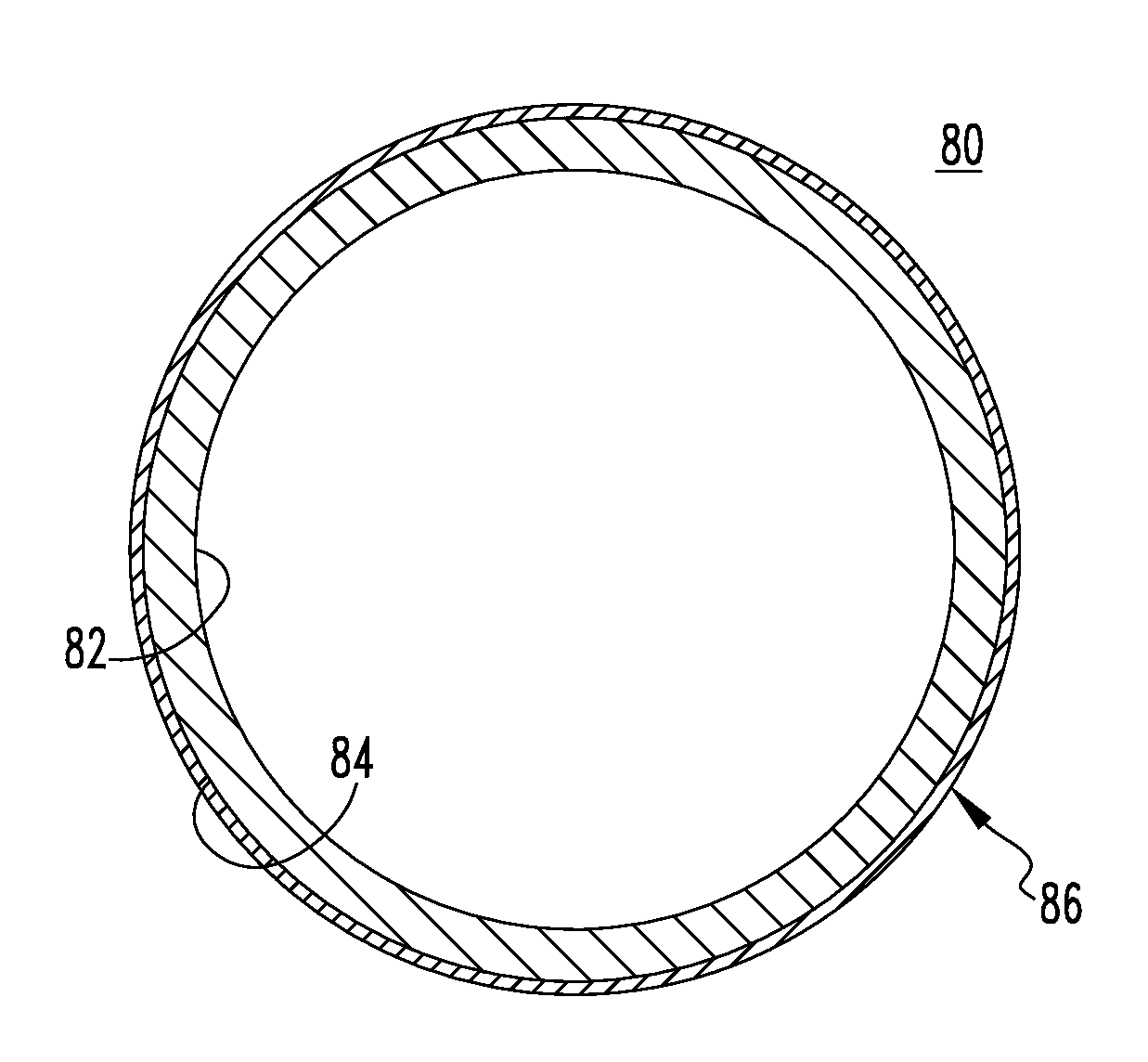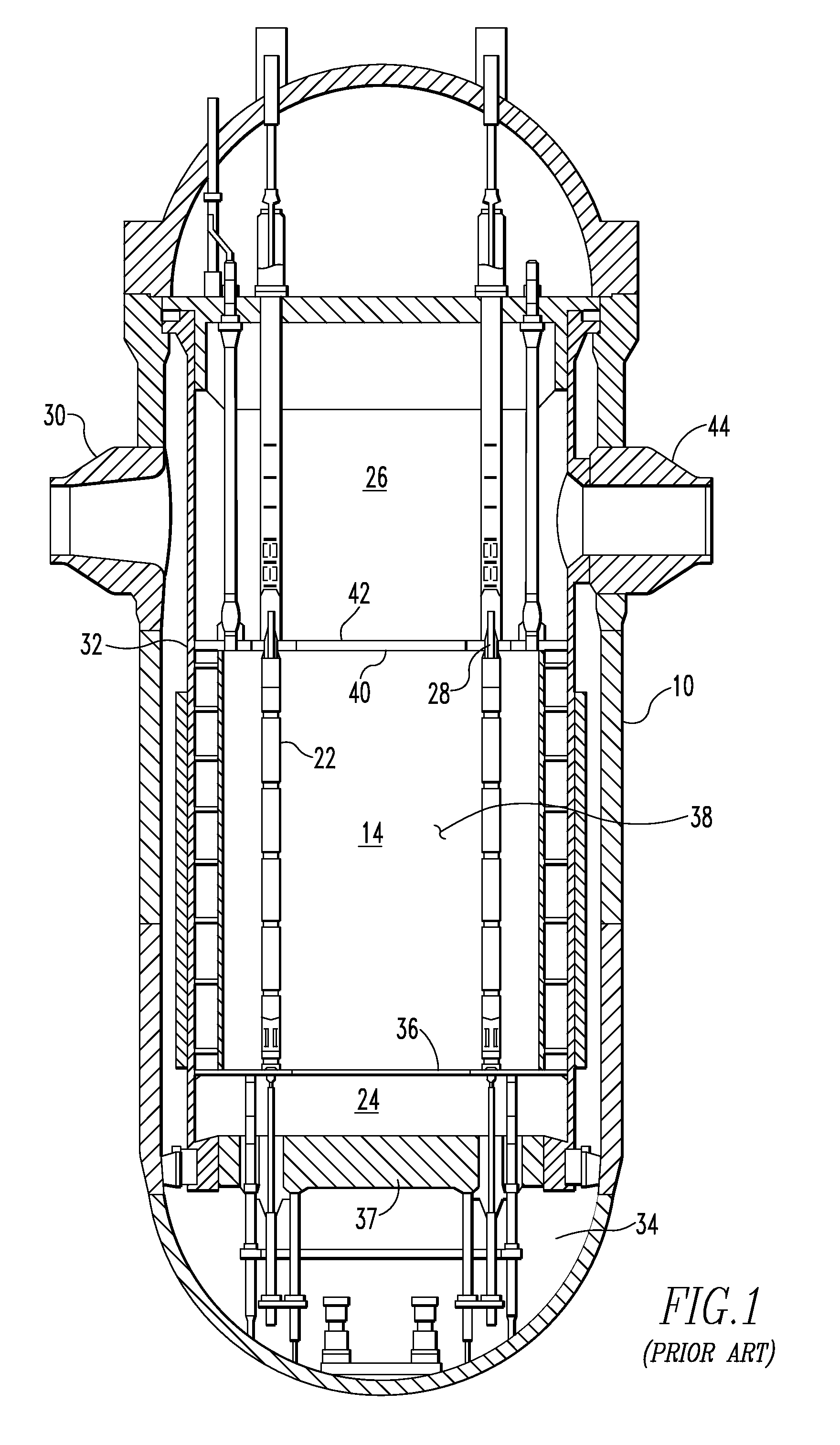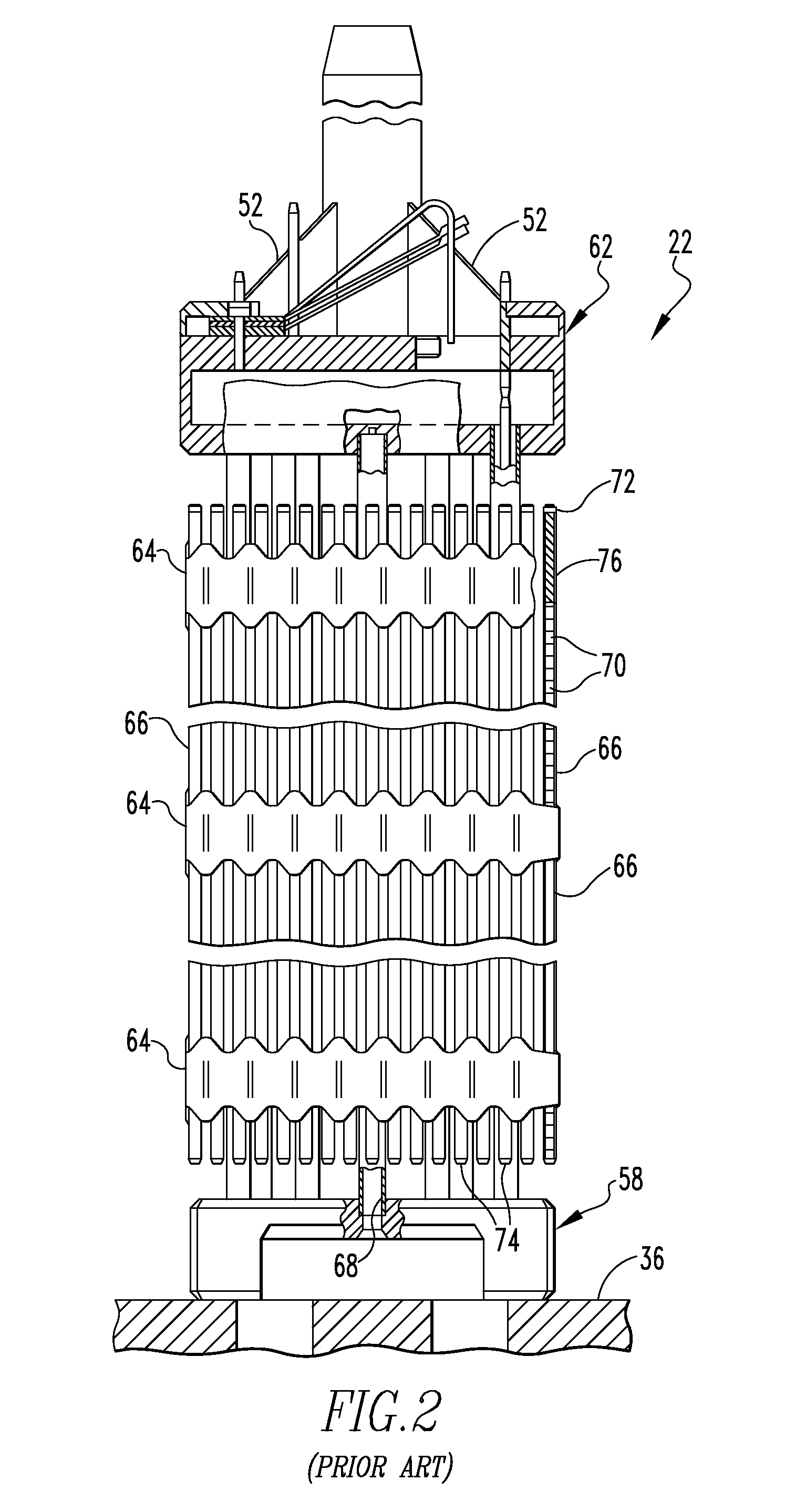Corrosion and wear resistant coating on zirconium alloy cladding
a zirconium alloy and corrosion-resistant coating technology, which is applied in the direction of distance measurement, greenhouse gas reduction, instruments, etc., can solve the problems of fuel rod degradation, rapid corrosion, and low safety margin, and achieve the effect of reducing the overall thickness
- Summary
- Abstract
- Description
- Claims
- Application Information
AI Technical Summary
Benefits of technology
Problems solved by technology
Method used
Image
Examples
Embodiment Construction
[0035]The invention relates generally to fuel rod elements for use in nuclear water reactors, such as pressurized water reactors and boiling water reactors. The fuel rod elements include cladding. The cladding may be composed and constructed of a variety of conventional materials known in the art. For example, as previously described herein, it is known to construct fuel rod cladding for a nuclear water reactor from zirconium (Zr) alloy containing a majority amount of Zr and a minority amount, e.g., up to about 2% by weight based on total weight of the composition, of other metals, such as but not limited to niobium (Nb), tin (Sn), iron (Fe), chromium (Cr) and combinations thereof. Non-limiting examples of conventional Zr alloys for use in a nuclear water reactor include, but are not limited to, Zircaloy-2, Zircaloy-4, and ZIRLO.
[0036]The fuel rod cladding is positioned in the core of a nuclear water reactor and therefore, is in contact and reacts with water to produce hydrogen acco...
PUM
| Property | Measurement | Unit |
|---|---|---|
| temperature | aaaaa | aaaaa |
| thickness | aaaaa | aaaaa |
| velocity | aaaaa | aaaaa |
Abstract
Description
Claims
Application Information
 Login to View More
Login to View More - R&D
- Intellectual Property
- Life Sciences
- Materials
- Tech Scout
- Unparalleled Data Quality
- Higher Quality Content
- 60% Fewer Hallucinations
Browse by: Latest US Patents, China's latest patents, Technical Efficacy Thesaurus, Application Domain, Technology Topic, Popular Technical Reports.
© 2025 PatSnap. All rights reserved.Legal|Privacy policy|Modern Slavery Act Transparency Statement|Sitemap|About US| Contact US: help@patsnap.com



